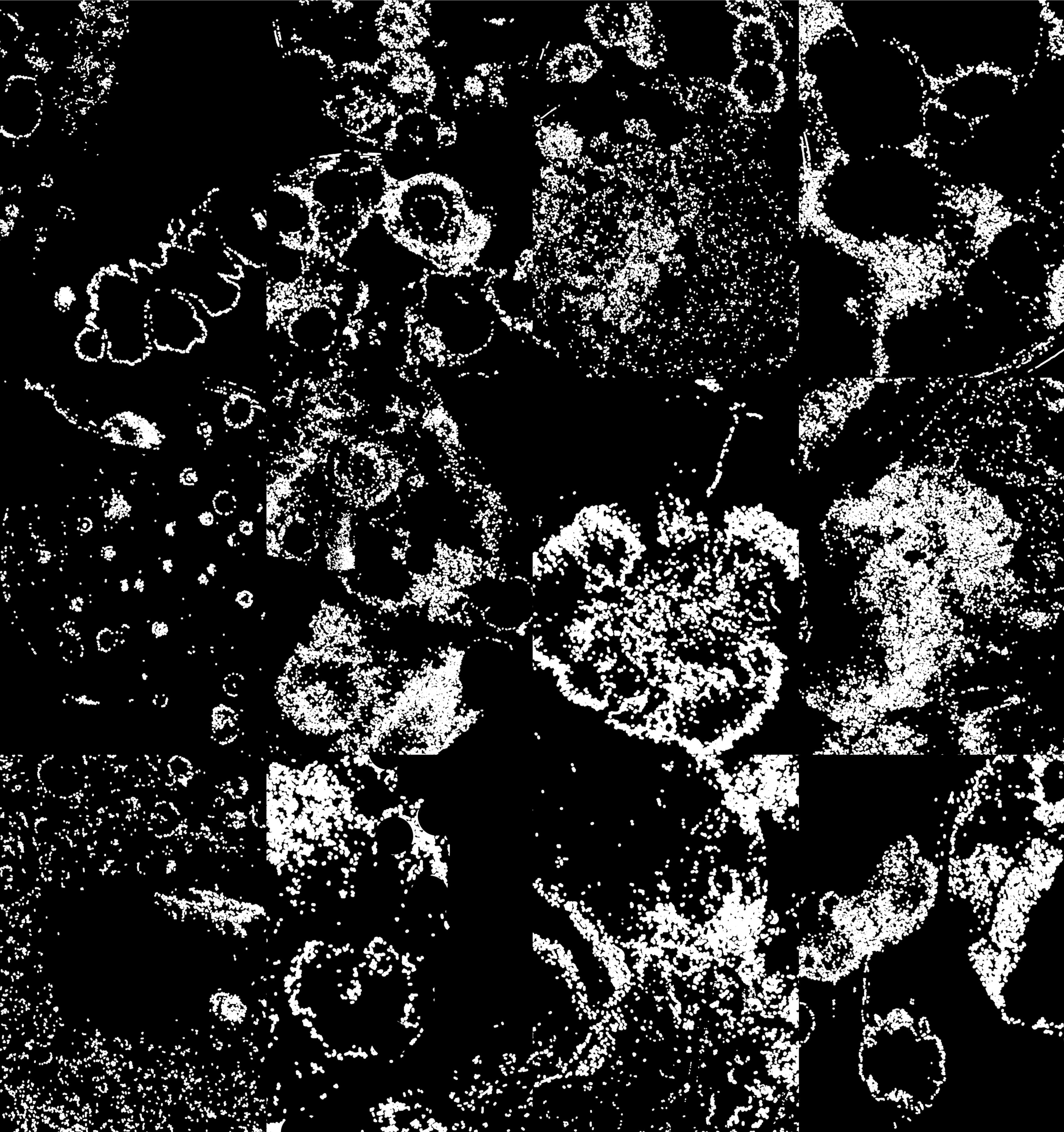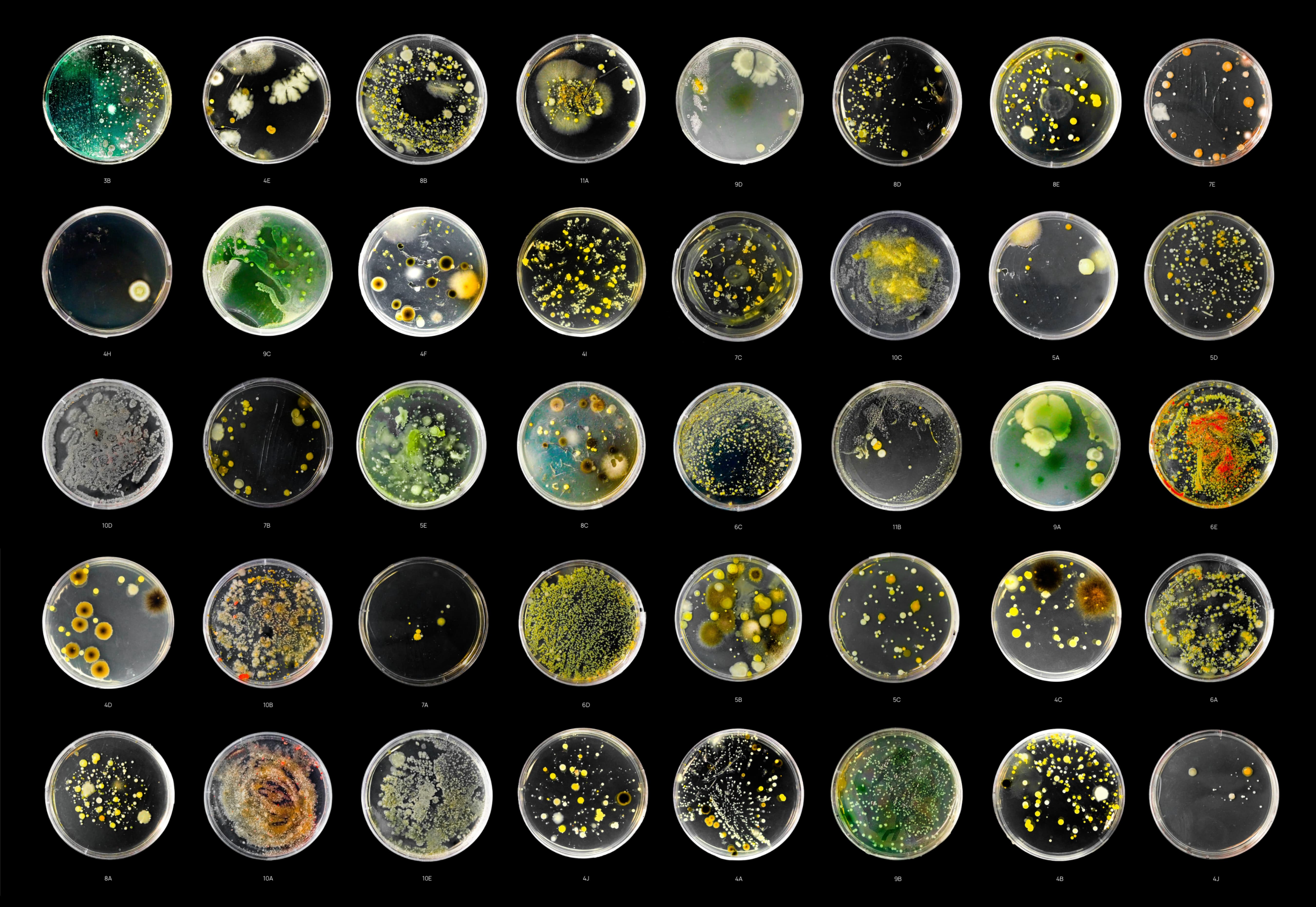the dish is your canvas
Catherine Elizabeth Gunadi
From obscurity to clarity, The Dish is Your Canvas is a project with an experimental
nature that utilises bacteria  as an artistic
material for the sake of visual experimentation. Many present-day designers employ similar tools
and techniques in designing, prioritising a design style that is deemed as “nice” or is
currently popular — in short, outcome-driven. Visual experimentation comes into play by allowing
designers to conduct visual research for the sake of visual research. By
experimenting with
unexpected tools and materials to generate unconventional outcomes, this serves to expand a
designer’s visual language. In relation to existing experimental design practices, Catherine’s
foray into experimenting with bacteria demonstrates her ambition in image-making unattainable
through traditional design tools.
as an artistic
material for the sake of visual experimentation. Many present-day designers employ similar tools
and techniques in designing, prioritising a design style that is deemed as “nice” or is
currently popular — in short, outcome-driven. Visual experimentation comes into play by allowing
designers to conduct visual research for the sake of visual research. By
experimenting with
unexpected tools and materials to generate unconventional outcomes, this serves to expand a
designer’s visual language. In relation to existing experimental design practices, Catherine’s
foray into experimenting with bacteria demonstrates her ambition in image-making unattainable
through traditional design tools.
Could you maybe talk about the creative processes you explored in your work?
I focus on what I can add on, what I can do, what I can synthesise with the material rather than aiming for a certain outcome. I would say my creative process is more of doing anything anyhow; sometimes just layering them or adding effects, then seeing how it goes.
For my experiments, I tried to see if I could translate the bacteria’s characteristics into my experiments. Bacteria are somehow generative, which is why I use coding and AI — you don't really know how the result is going to turn out. So that shares similarity with how bacteria is like in nature. There's this one experiment I did where I simply fed the AI with my images of dishes because I was trying to capture the growth of the bacteria, but it wasn’t feasible because the bacteria has to grow with no light. There was no way for me to capture it. I think it's quite interesting because you don't know how the AI is going to transform that. And it also gives a very interesting result.
But prior to that, I actually started off very simple. I just used the
bacteria without any added substances. Then as I went along, I felt like the outcome that the
bacteria was giving me was very limited. So I thought: is there anything else that I could do to
make the bacteria produce something more diverse? That's when I got the idea to add more
substances.  At first I tried adding food dye, but that didn't work very
well. Then I consulted with a biochemist, I think from the States.
She started giving out a list of substances that I could use. There are substances that
could either promote bacterial growth or even stunt them — sugar gelatin and alcohol
respectively. With those substances, I could create patterns on a dish. The choice of
substances that I added was very experimental, but at the same time I would also limit them with
parameters and I’d keep track of things like, “this batch is only used with this substance”, so
it's different every time.
At first I tried adding food dye, but that didn't work very
well. Then I consulted with a biochemist, I think from the States.
She started giving out a list of substances that I could use. There are substances that
could either promote bacterial growth or even stunt them — sugar gelatin and alcohol
respectively. With those substances, I could create patterns on a dish. The choice of
substances that I added was very experimental, but at the same time I would also limit them with
parameters and I’d keep track of things like, “this batch is only used with this substance”, so
it's different every time.
How aware were you of the outcome that the bacteria would produce?
To an extent, yes I was aware. If I put alcohol in the middle, then of course there will be no bacterial growth. However, for the pattern outside the bacterial growth, I never expected it to look like how it came out. So that's the fun part, I'd say. Every time I open my little bunker, it's always a surprise.
If you are speaking to a fellow designer through your work, what would your message be?
The other reason why I chose bacteria is because of my interest in the sciences before embarking on this design journey. I actually almost took on biology. I'd say that we actually have a lot of freedom as an artist/designer. Explore more. Sometimes, you may feel like you have a different calling. What if you tried to combine that with design?
See Ready Made
See Folia Imprints, and Garbage Playtime!
See Copycat! (real), and Ready Made